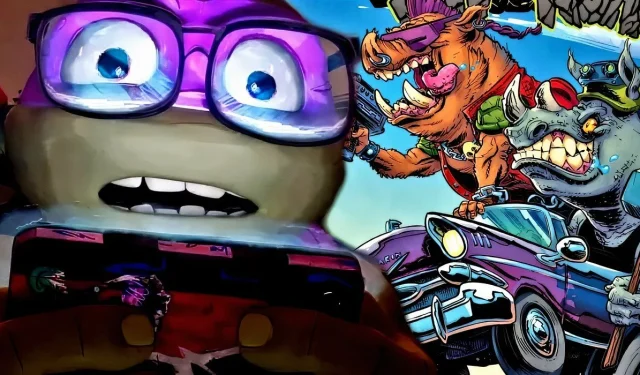
Warning: This article contains SPOILERS for Teenage Mutant Ninja Turtles: Mutant Nation #2!
Bebop and Rocksteady have cemented their status as iconic figures in the Teenage Mutant Ninja Turtles franchise. Yet, their origins in human form have largely remained shrouded in mystery within the IDW Publishing version of the TMNT universe. Fans have known that these characters were once human, but this transitional phase had not been visually represented—until now.
Unveiling the Human Side of Bebop & Rocksteady
In the latest issue, Teenage Mutant Ninja Turtles: Mutant Nation #2, titled “Casey Jones: Agent of the Foot Clan,” penned by Erik Burnham with art by Mateus Santolouco, readers finally get a glimpse of Bebop and Rocksteady’s human forms. During a training session with fellow Foot Clan members, Casey Jones encounters these familiar mutants. Instead of a confrontation, they seek Casey’s assistance with a teleportation device so they can indulge in some leisure time in Las Vegas.

Upon Casey’s concern that their mutant appearances will frighten the locals, Bebop and Rocksteady reveal a high-tech solution. Thanks to a gift from Karai, the leader of the Foot Clan, the duo is equipped with wrist devices that project holograms of their human selves. This groundbreaking technology allows them to temporarily mask their mutant identities, effectively offering fans a window into how they appeared prior to their transformations in the IDW canon.
Bebop & Rocksteady’s Human Transformation: Broader Implications
The Ripple Effect on Other Mutants
The significance of this holographic transformation goes far beyond just visual novelty. If Bebop and Rocksteady can utilize such technology, it raises intriguing questions about the potential for other mutants in the TMNT universe—could the Ninja Turtles themselves also adopt this disguise? This technology could pave the way for various storylines where mutants reclaim their former identities.
Moreover, this possibility is particularly poignant as many mutants in the IDW continuity, such as the inhabitants of the Mutant Town in Manhattan, have faced the trials of being ostracized from human society. The emergence of hologram technology could provide these characters with the chance to reintegrate into their previous lives—a narrative opportunity that the TMNT series would be wise to explore.
Historical Context of Bebop & Rocksteady’s Human Identities
A Look Back at Previous Appearances
While the revelation of Bebop and Rocksteady’s human identities holds substantial weight in IDW’s current storyline, it is worth noting that this isn’t the first time fans have witnessed their human forms. Prior adaptations, notably the 1990s animated series and the live-action film Teenage Mutant Ninja Turtles: Out of the Shadows, depicted the characters before their transformation into mutants.
However, this new exploration in the IDW series is particularly impactful. Since its inception in 2011, IDW Publishing has been recognized as the authoritative narrative of the Teenage Mutant Ninja Turtles mythos, and this unveiling marks a long-anticipated moment for audiences familiar with the franchise. The humanization of these characters adds depth and opens up exciting new avenues for storytelling in the TMNT universe.
Fans can currently dive into the latest adventures with Teenage Mutant Ninja Turtles: Mutant Nation #2, available now.




Leave a Reply